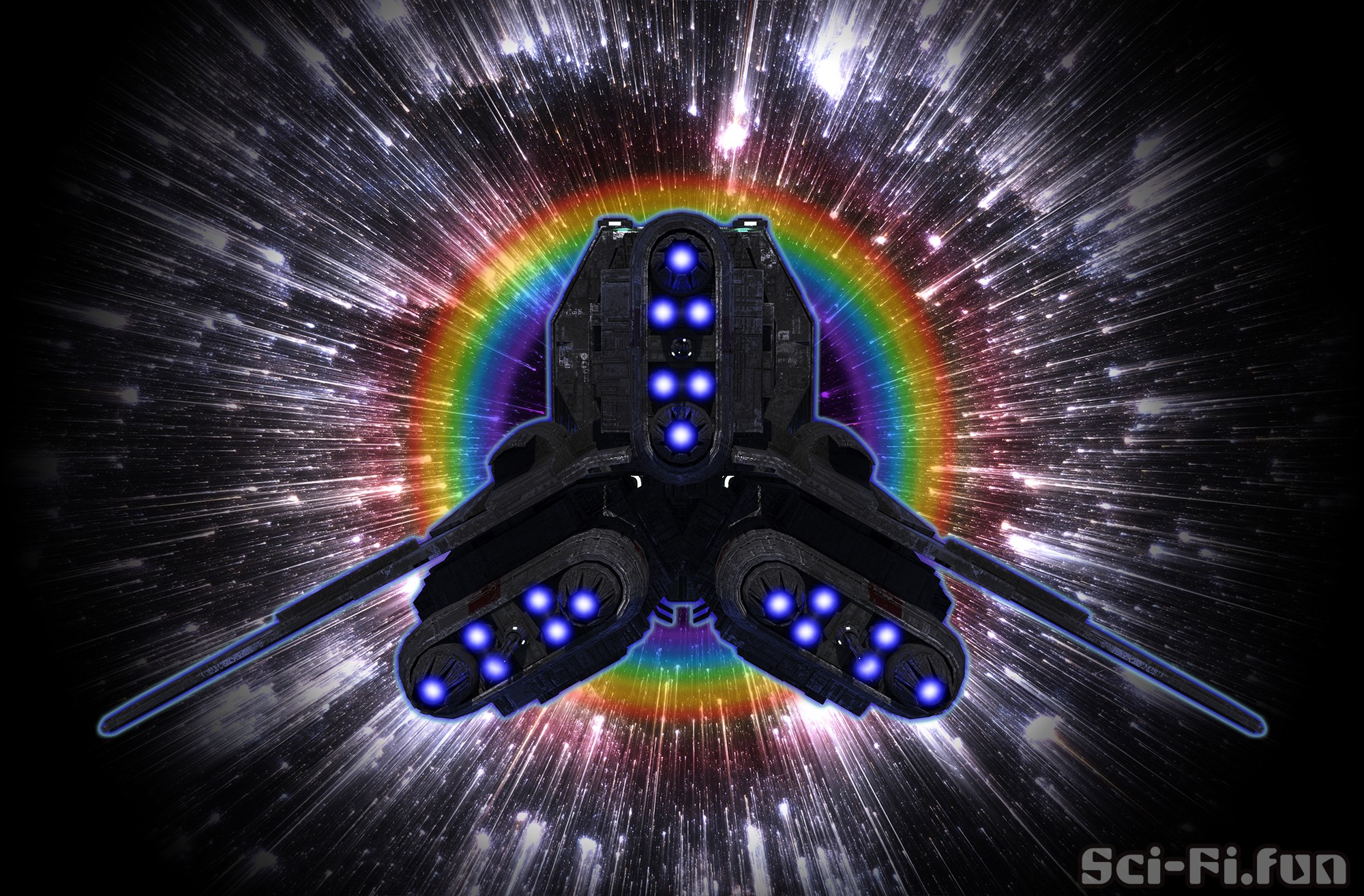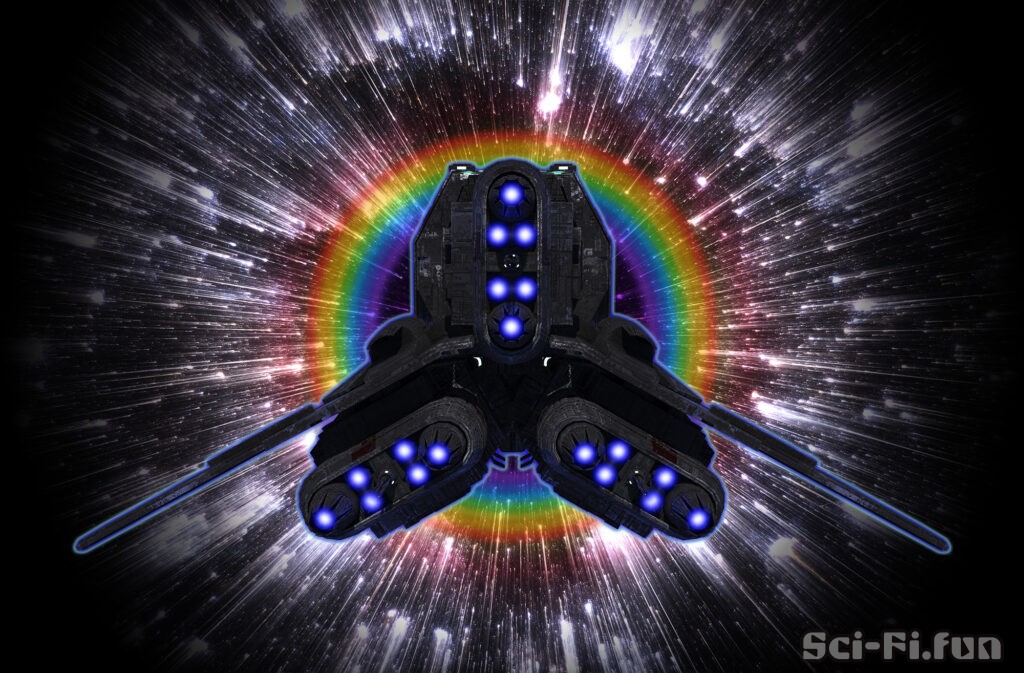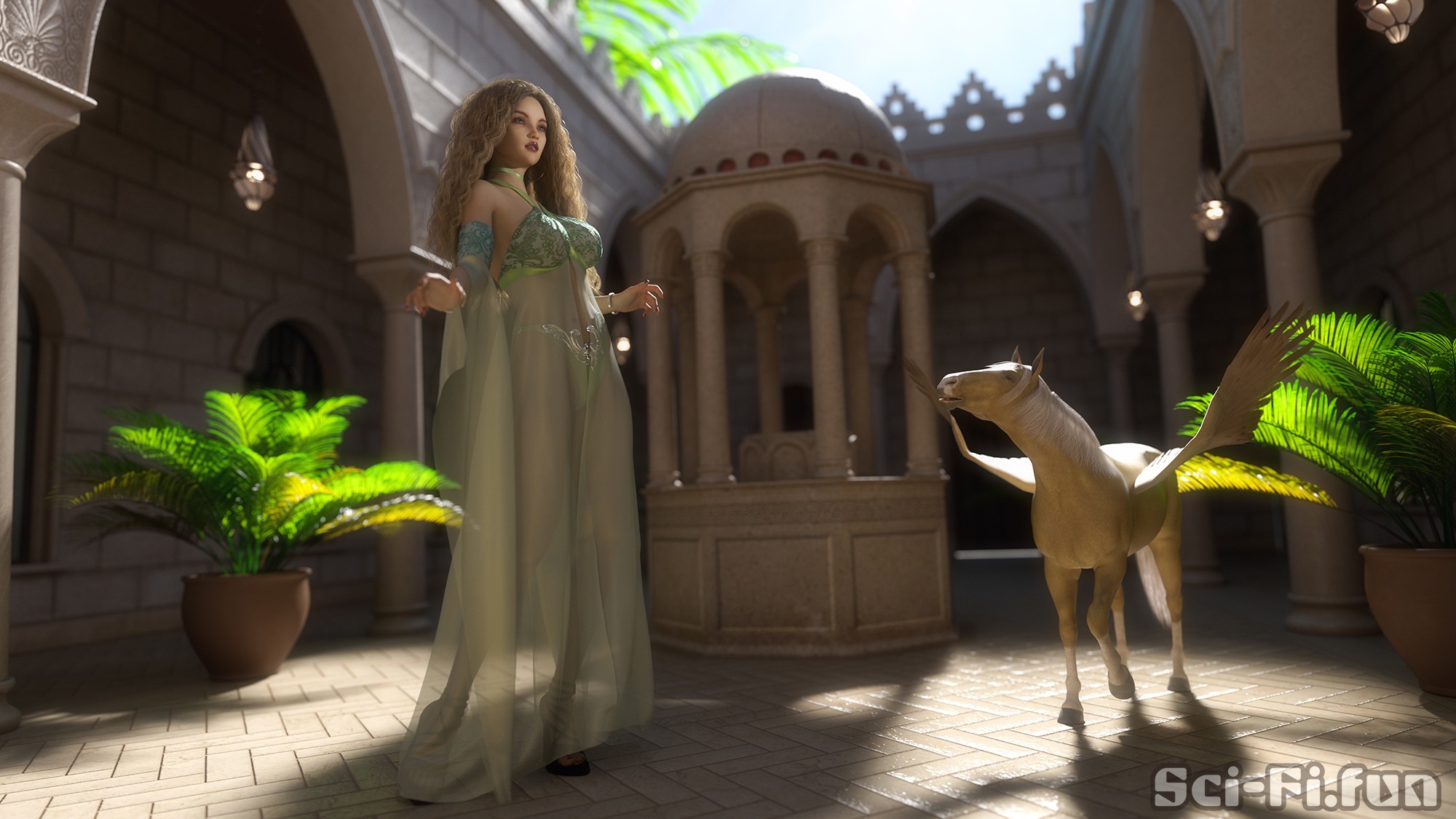亜光速で飛ぶ宇宙船の前方には、星虹が鮮やかなリングを描く。
人類初の反物質エンジンを搭載した恒星間宇宙船「スペース(Spes)」号。名前はラテン語の「希望」と英語の「宇宙」をかけあわせたもの。
地球からもっとも近い恒星のプロキシマ・ケンタウリに向けて、4.243光年の航宙をしている。
行程の半分までを1Gで加速し、残り半分は船尾を目的地に向けて1Gの減速。最高速度は0.9495939362026676C(光速の約0.95倍)にまで達する。
乗員にとっての所要主観時間は約3年198日、地球から見た所要客観時間が約5年318日で、プロキシマ・ケンタウリに到達する予定だ。
スペース号は全長が約400メートルあり、人類が造ってきた宇宙船の中で最大だが、船体重量の97%は燃料だ。乗員は男女半々の20名で、10組の夫婦である。
探査船であると同時に移民船でもある。惑星のプロキシマ・ケンタウリbは、地球の1.3倍ほどの大きさの惑星でハビタブルゾーンに存在する。プロキシマ・ケンタウリbは、アウローラ(Aurora)と名付けられた。
乗員は片道切符を承知で乗り込んでいた。アウローラが生存可能な惑星かどうかは不確かだが、観測から酸素と水の存在の可能性は高い。彼らは人類の先陣を切って恒星間宇宙に挑んでいるのだ。
帰還計画も立てられてはいる。帰還用の燃料を搭載できるより大型の宇宙船を建造して飛ばす計画だが、それにはコストと時間が膨大にかかる。5年で実現できれば御の字だといわれているが、10年かかるかもしれない。
いずれにしても、スペース号の乗員はアウローラで生きる術を見つけるしかない。
若い10組の夫婦は、アウローラに住むことが可能であれば、子供を産むことを考えるだろう。長期の宇宙航行になるため、男女とも避妊処置を施されている。出産を希望する場合には、避妊処置を解除する。その判断は、アウローラがどんな惑星かによる。
スペース号の航宙は、テストなしの一発勝負なのだ。
宇宙開発の初期の頃は、月まで行くのに最初は無人機を飛ばし、有人飛行での実現までに何度もテストを重ねた。火星でも同様だった。それは近い衛星であり惑星だったからだ。
しかし、プロキシマ・ケンタウリはもっとも近い恒星といっても、桁違いに遠い。光で4.243年かかるのだから、通信には往復8.486年である。無人機でテストできるレベルではない。
無謀な計画だとの批判も多かったが、最終的にはゴーサインが出た。歴史的偉業であることは間違いなかった。たとえ失敗したとしても、歴史に名を刻むことになる。
乗員を公募すると、希望者が殺到した。乗っていくのは人間だけではなく、犬、猫、馬、牛、豚、鳩などの動物や、稲、麦、芋類、果実類などの植物の種や苗も載せられた。
いわば現代のノアの箱舟である。
航宙にあたっては、乗員を5組ずつの2グループに分け、1グループが行程の半分を起きたまま過ごして船を管理し、残り半分は交代してコールドスリープに入る。動物たちはすべてコールドスリープで眠らせた。
プロキシマ・ケンタウリ星系に入り、減速が最終段階に入ると、乗員は全員が起きて到着を待ちわびた。
赤色矮星は見慣れた太陽とは異なり、小さく頼りない感じがした。しかし、アウローラが見える距離まで近づくと、距離が近いこともあって存在感を示すようになった。
アウローラは「夜明け」を意味するラテン語。
ここが彼らにとっての新天地であり、夜明けの始まりなのだ。
In front of the spaceship flying at sublight speed, a brilliant ring of star bows is drawn.
The Spes, an interstellar spaceship equipped with mankind’s first antimatter engine. Its name is a combination of the Latin word “Hope” and the English word “Space”.
It is on a 4.243 light-year journey to Proxima Centauri, the closest star to Earth.
It accelerates at 1G for up to half of the journey, and decelerates at 1G for the other half, with the stern pointing toward the destination. The maximum speed reaches 0.9495939362026676C (about 0.95 times the speed of light).
The required subjective time for the crew will be about 3 years and 198 days, and the required objective time from Earth will be about 5 years and 318 days to reach Proxima Centauri.
The Spes is about 400 meters long, the largest spaceship ever built by mankind, and 97% of its weight is fuel. The crew consists of 20 people, half men and half women, and 10 couples.
It is both an exploration ship and a migrant ship. The planet Proxima Centauri b is about 1.3 times the size of Earth and exists in the habitable zone. Proxima Centauri b has been named Aurora.
The crew knew they had a one-way ticket aboard, and while it was uncertain whether Aurora was a viable planet, observations indicated that oxygen and water were likely present. They were ahead of the human race in the challenge of interstellar space.
A plan to return home is in the works. The plan is to build and fly a larger spacecraft that can carry the fuel for the return trip, but it will take a lot of time and money.
Either way, the crew of the Spes will have to find a way to live on Aurora.
Ten young couples would consider having a child if it were possible to live on Aurora. Since it will be a long space voyage, both men and women are on birth control. If they wish to have a baby, the contraceptive will be removed. That decision will depend on what kind of planet Aurora is.
The Spes is a one-shot deal with no tests.
In the early days of space exploration, we first flew unmanned vehicles to the moon, and then conducted many tests before realizing a manned flight.The same was true for Mars. The same was true for Mars, because it was a close satellite and planet.
However, Proxima Centauri is an order of magnitude farther away, even though it is the nearest star. It would take 4.243 years for light to travel to Proxima Centauri, which means a round trip of 8.486 years for communication. This is not a level that can be tested by unmanned aircraft.
There was much criticism that the plan was reckless, but in the end it was given the go-ahead. There was no doubt that it was a historic feat. Even if it failed, it would go down in history.
When they advertised for crew members, they were inundated with applicants. Not only humans, but also animals such as dogs, cats, horses, cows, pigs, and pigeons, as well as seeds and seedlings of plants such as rice, wheat, potatoes, and fruits were carried.
In a sense, it was a modern-day Noah’s Ark.
For the voyage, the crew was divided into two groups of five, with one group spending half of the journey awake to manage the ship, and the other half taking turns to go into cold sleep. All the animals were put to sleep in cold sleep.
As they entered the Proxima Centauri system and entered the final phase of deceleration, the crew all woke up and awaited their arrival.
Unlike the familiar sun, the red dwarf was small and unreliable. However, as Aurora approached within sighting distance, it began to make its presence felt, partly due to its proximity.
Aurora is a Latin word that means “The Dawn”.
This is a new place for them, the beginning of the dawn.




